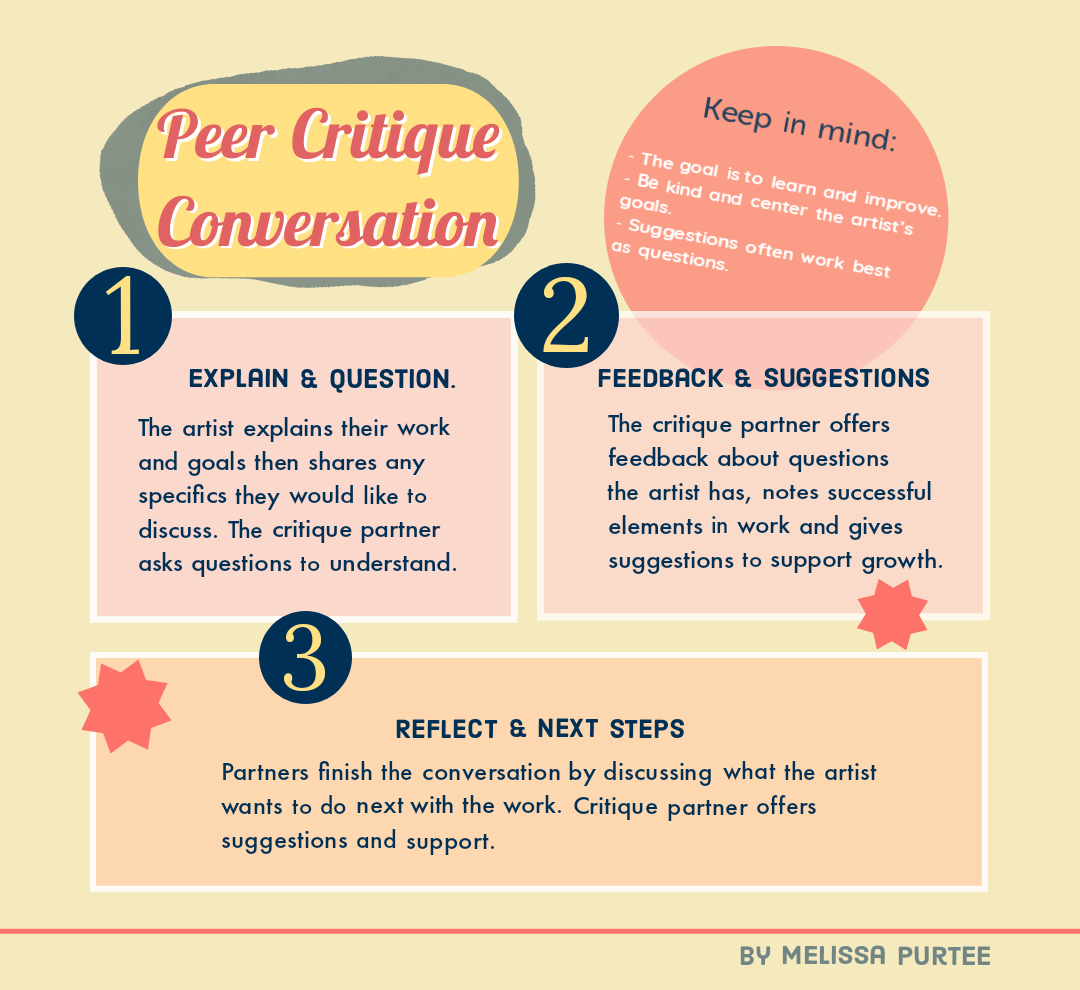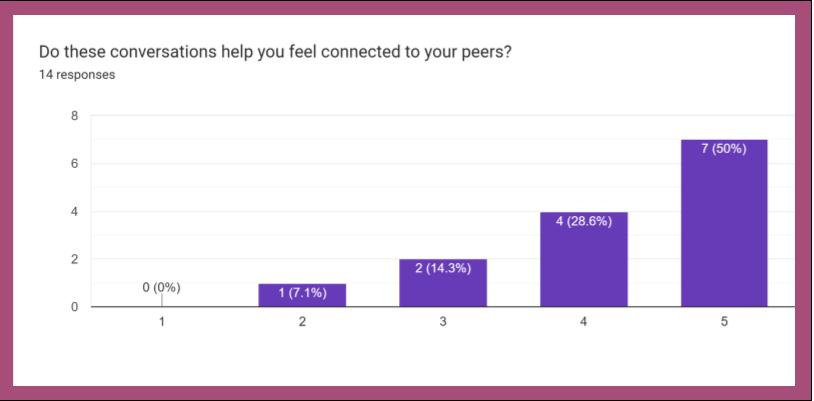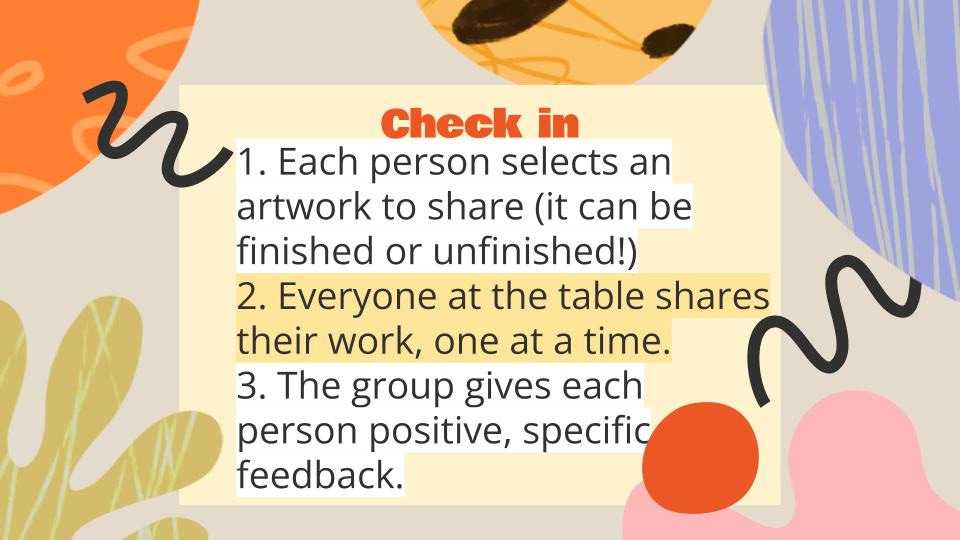This school year I've been working on developing a critique process build on relationships and trust, differentiated by the needs of each student. I wrote about what I'd come up with during the first semester in an article published in the March issue of Schoolarts, which was dedicated to TAB/Choice. You can read the article (pictured below) and the entire digital issue here.
During the first semester had my students critique art once a week in what I called Critique Conversations. I introduced the process, pictured in the image below, then the conversations happened in table groups of up to eight until life got in the way and I had to be out from work for quite a chunk of time. I got so behind after being out that I decided to pause until the second semester.
The conversations we were able to have went well but the students were still learning the steps, which - looking back- were on the complicated side.

As my new, second-semester classes started a few weeks ago and I was planning to start Critique Conversations again I was lucky to attend a short PD session led by my wonderful AP. The focus was on “Circle Mindset”, which relates to establishing trust, respect for each other, a sense of community, and the positive relationships that Restorative Practice Circles foster without being actually in a Circle. I'd previously done a two-day Restorative Practice Circlekeeper training so I had lots of background knowledge going into this learning opportunity. Here is one place you can read more about Restorative Practice).
This short but powerful session helped me realize a few ways I could improve my critique process. A story shared during the session about a student feeling uncomfortable with being asked to share more than he wanted to on the first day of school made me realize I needed to slow down and first build trust with students and among table groups. I also decided to try introducing the process slowly, over time, to let students build comfort and capacity.

On Friday of the first week with my new classes, I introduced the start of the process, which will be a weekly routine. We focused on building relationships through a check-in question, where I asked students to share three things about themselves with their table groups.
The next week I added a bit more, asking the class to pick one artwork or work in progress to share with their group and the group to respond with positive feedback.
This past week we again picked one artwork to share but started with a discussion about giving specific feedback (pictured below). Each week I've added a little more to the process - slowly, over time - to build capacity and make sure students are comfortable with what I’m asking them to do. I've participated in a different group's conversion each week as well to support and model what I'm looking for.
I heard lots of great conversations during the activity but, more importantly, groups continued talking after and asking each other for opinions more often. This really gets to the “circle mindset” that I’m trying to build. I envision that manifesting in my visual arts classroom as each learner being an active part of our creative community and all having multiple peers they can talk through artistic challenges and questions with, getting meaningful feedback in return.

After Friday's conversation, I gave a short survey to the class and most students said the conversations were helpful and made them feel more connected to their peers. I asked for feedback as well and some students responded that they would like to receive constructive criticism as well as positive feedback. Next week I will add that as an option. I’ll continue to build trust and capacity a week at a time, with my focus on keeping a circle mindset as I plan and reflect on this process.



